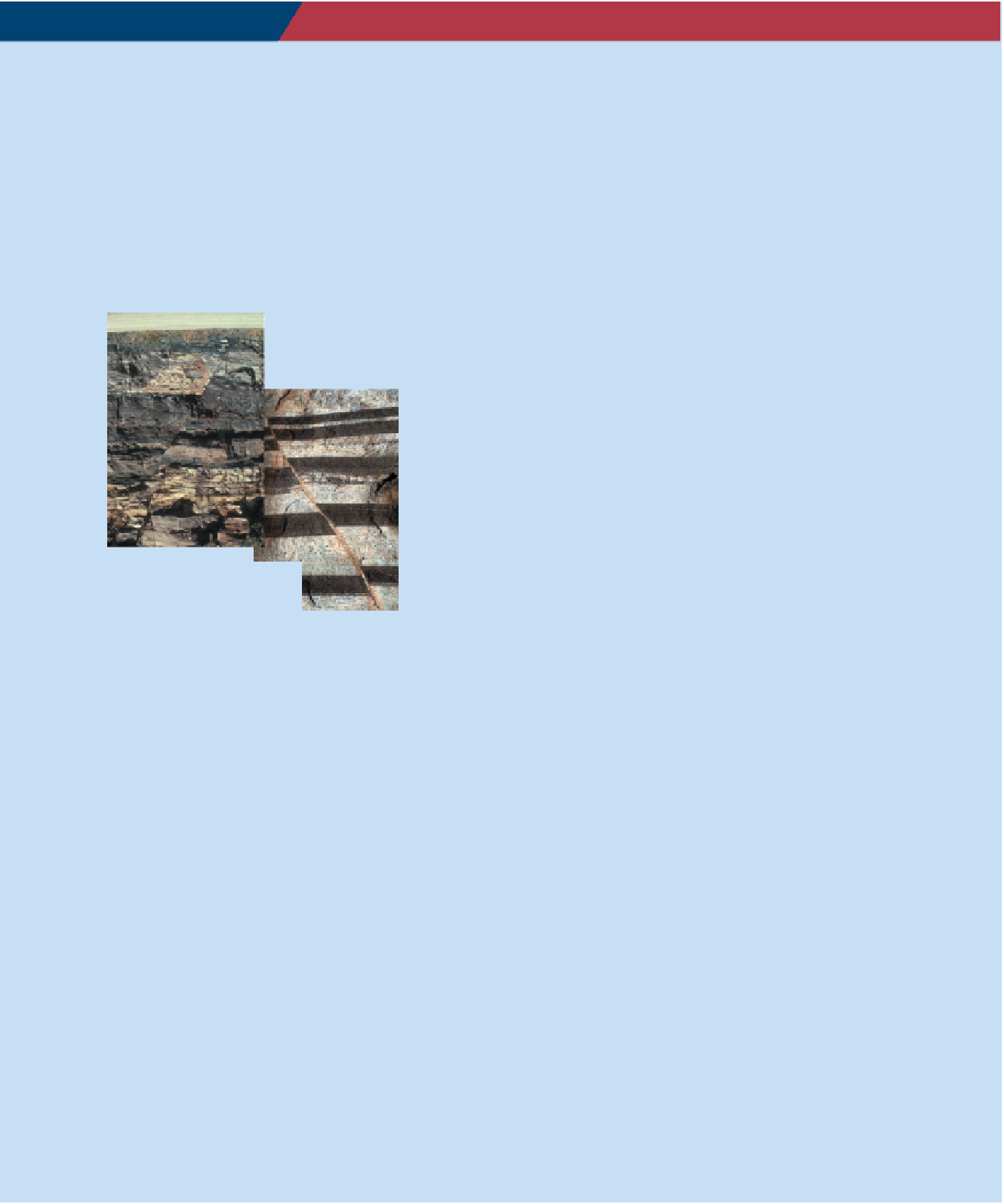Geology Reference
In-Depth Information
Geo-inSight
Types of Faults
Faults are very common geologic structures. They are
fractures along which movement takes place parallel to the
fracture surface. A block of rock adjacent to a fault may
move up or down a fault plane—that is,
up or down the dip of the fault. These
are thus called dip-slip faults. On the
other hand, movement may take place
along a fault's strike, giving rise to
strike-slip faults.
Movement on faults and the release of stored energy are
responsible for earthquakes (see Chapter 8). Most faults
are found at the three major types of plate boundaries:
convergent, divergent, and transform.
1. Two small normal faults
cutting through layers of
volcanic ash in Oregon.
Image not available due to copyright restrictions
3. 4. Can you identify the
type of faults shown in these
two images?
5. Diagrammatic view of the
Lewis overthrust fault
(a low-angle thrust fault) in
Glacier National Park, Montana.
Ancient Precambrian-age
rocks now rest on deformed
Cretaceous-age sedimentary
rocks.
West
East
Precambrian rocks
Chief Mountain
Deformed Cretaceous rocks
Lewis overthrust
vv
t
e
ve
t
e
e
rt
e
e
t
rt
e
e
t
r
rt
e
e
t
rrt
r
t
t
rt
r
t
r
rt
t
t
t
tt
th
h
h
h
h
h
r
r
hh
r
r
r
r
r
r
r
r
u
u
u
u
u
u
u
us
s
s
ss
s
ss
s
sss
s
t
vv
v
e
Chief Mountain
Lewis overthrust
6. View from Marias Pass reveals the fault as a light-
colored line on the mountainside.
7. Erosion has isolated Chief Mountain from the rest of
the slab of overthrust rock.
262





























































































































































































































































































































































































































































Search WWH ::

Custom Search